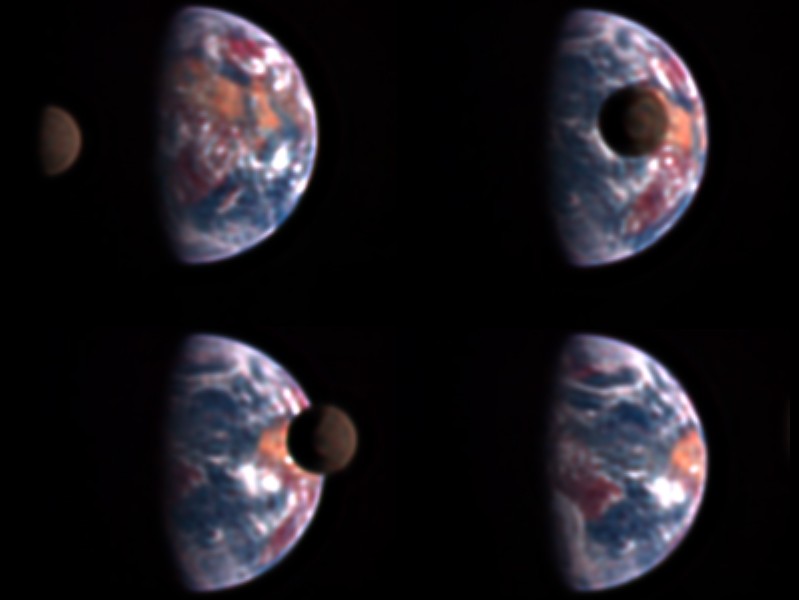Credit & Copyright: Donald J. Lindler,
Sigma Space Corporation,
GSFC,
Univ. Maryland, EPOCh/DIXI Science Teams
Explanation:
On July 4th, 2005, the Deep
Impact spacecraft directed a probe to impact the
nucleus of Comet Tempel 1.
Still cruising through the solar system, earlier this year
the robotic
spacecraft looked back to record a series of
images of its home world
31 million miles (50 million kilometers) away.
In a sequence from top left to bottom right, these four frames from
the video
show a rotating Earth.
They combine visible and near-infrared
image data with enough resolution and contrast to see
clouds, oceans, and continents.
They also follow a remarkable transit of Earth by its
large, natural satellite, the Moon.
The Moon's orbital motion carries it across the field of
view from left to right.
Imaging the Earth
from this distant perspective allows
astronomers to connect overall variations in brightness at
different wavelengths with planetary features.
The observations will aid in
the search for earth-like planets in
other solar
systems.
Univ. Maryland, EPOCh/DIXI Science Teams
1999 2000 2001 2002 2003 2004 2005 2006 2007 2008 2009 2010 2011 2012 2013 2014 2015 2016 2017 2018 2019 2020 2021 2022 2023 2024 2025 |
Yanvar' Fevral' Mart Aprel' Mai Iyun' Iyul' Avgust Sentyabr' Oktyabr' Noyabr' Dekabr' |
NASA Web Site Statements, Warnings, and Disclaimers
NASA Official: Jay Norris. Specific rights apply.
A service of: LHEA at NASA / GSFC
& Michigan Tech. U.
|
Publikacii s klyuchevymi slovami:
Earth - Moon - transit - Zemlya - Luna - Prohozhdenie
Publikacii so slovami: Earth - Moon - transit - Zemlya - Luna - Prohozhdenie | |
Sm. takzhe:
Vse publikacii na tu zhe temu >> | |
